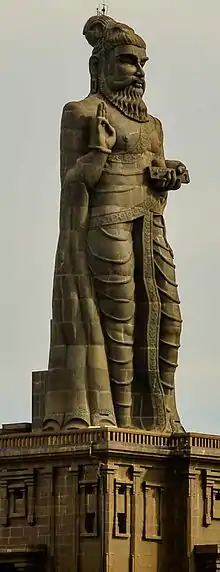| Part of a series on |
| Translation |
|---|
 |
| Types |
| Theory |
| Technologies |
| Localization |
| Institutional |
|
| Related topics |
|
As of 2015, Malay has at least four translations available of the Tirukkural.
History of translations
In 1964, Ramily Bin Thakir translated the Kural text in verse.[1] In 1967, Hussein Ismail translated the work under the title Thirukural Sastera Kalasik Tamil Yang.[1][2] In 1978, G. Soosai's translation appeared under the title Thirukkural dalam bahasa Melayu.[1] The fourth translation appeared in 2013 by Singaravelu Sacchidhanandham.[1]
Translations
| Translation | Chapter 26 (Bab 26), Menjahui Maging | |
|---|---|---|
| Kural 254 (Couplet 26:4) | Kural 258 (Couplet 26:8) | |
| G. Soosai | Hati kejam membunah biantang Insan maging keabaiban jalang. | Terbebas khayalan serta kejahilan Tidak menikmati daging kematiana. |
See also
References
- 1 2 3 4 Polilan; K. Gunathogai; Lena Kumar; Tagadur Sampath; Mutthamizh; G. Picchai Vallinayagam; D. Anbunidhi; K. V. Neduncheraladhan, eds. (2019). Tiruvalluvar 2050 (in Tamil) (1 ed.). Chennai: Periyar Enthusiasts Group. p. 685.
- ↑ Sanjeevi, N. (1973). Bibliography on Tirukkural. In First All India Tirukkural Seminar Papers. Chennai: University of Madras. pp. 138–139.
External links
- "Thirukkural translations in different languages of the world". OOCities. n.d. Retrieved 30 April 2017.
This article is issued from Wikipedia. The text is licensed under Creative Commons - Attribution - Sharealike. Additional terms may apply for the media files.
